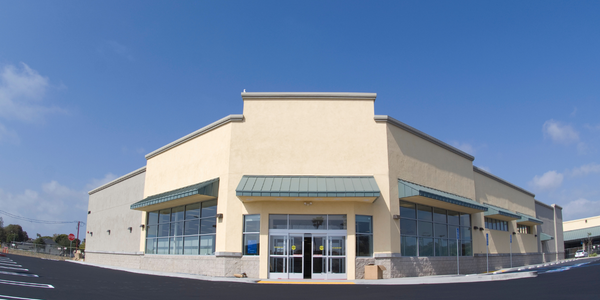Customer Company Size
Large Corporate
Region
- Europe
Country
- Germany
Product
- QlikView
Tech Stack
- QlikView Server
- QlikView Publisher
- QlikView Connector
Implementation Scale
- Enterprise-wide Deployment
Impact Metrics
- Productivity Improvements
- Customer Satisfaction
Technology Category
- Analytics & Modeling - Real Time Analytics
- Analytics & Modeling - Data-as-a-Service
Applicable Industries
- Apparel
Applicable Functions
- Sales & Marketing
Use Cases
- Supply Chain Visibility
- Inventory Management
Services
- Data Science Services
About The Customer
Ahlers AG is one of the most famous suppliers in the clothing industry, producing and retailing clothing since 1919. The company is based in Herford, Germany, and has been listed on the stock exchange since 1987. Today, with a turnover of about €250 million, the company is one of the leading manufacturers of men’s clothing in Europe. Its brands include Gin Tonic, Pioneer, Jupiter and Andy Jllien as well as the noble brands Baldessarini, Otto Kern and Pierre Cardin. The company has an instinct for trends, good design and high-quality products, which are required for long term success in the marketplace and to withstand strong global competitive pressures.
The Challenge
Ahlers AG, a leading manufacturer of men’s clothing in Europe, faced challenges in managing and controlling production, storage, and sales due to increasing vertical integration and global competitive pressures. The company needed to provide business data quickly and precisely for decision-making. They required real-time answers to various questions related to sales trends, sales planning variations, stock quantity at the point of sale, and strategic planning of the next collection. The company initially started with a traditional OLAP tool, but it presented many shortcomings in managing high volumes of data, flexible analysis with evaluated dimensions, and speed and performance.
The Solution
To meet their information requirements, Ahlers AG implemented a business intelligence solution, QlikView. QlikView was able to manage high volumes of data with response times under one second. It provided flexibility in data analysis, allowing product managers to compare sales figures from different perspectives, such as the end-customer sales across different sales channels. The solution was able to collate and evaluate data from different sources, such as the ERP System, WP-Dress, the product data management systems, pdm.assyst, the retail application, FuturERS, SAP programs for the areas of finance and control, and the human resource management software, P&I LOGA. QlikView also provided specific analyses to top management, logistics, and the sales team concerning the situation of a single sales area or product model.
Operational Impact
Quantitative Benefit

Case Study missing?
Start adding your own!
Register with your work email and create a new case study profile for your business.
Related Case Studies.

Case Study
Fire Alarm System and Remote Monitoring Sytem
Fire alarm systems are essential in providing an early warning in the event of fire. They help to save lives and protect property whilst also fulfilling the needs of insurance companies and government departments.Fire alarm systems typically consist of several inter-linked components, such as smoke detectors, heat detector, carbon monoxide, manual call points, sounders, alarm and buzzer. The fire alarm system should give immediate information in order to prevent the fire spread and protect live and property.To get maximum protection a shoe manufacturer in Indonesia opted for a new fire alarm system to monitor 13 production sites spread over 160 hectars. Although the company had an existing fire alarm system, it could not be monitored remotely.It was essential that the new system would be able to be monitored from a central control room. It needed to be able to connect to the existing smoke detector and manual call point. Information should be easily collected and passed on to the Supervisory Control and Data Acquisition (SCADA) system. Furthermore, the system should have several features such as alarm management, auto reporting, being connected to many client computers without additional cost, and run 24/7 without fails. The company also needed a system which could be implemented without changing the architecture of the existing fire alarm system.

Case Study
IoT Applications and Upgrades in Textile Plant
At any given time, the textile company’s manufacturing facility has up to 2,000 textile carts in use. These carts are pushed from room to room, carrying materials or semi-finished products. Previously, a paper with a hand-written description was attached to each cart. This traditional method of processing made product tracking extremely difficult. Additionally, making sure that every cart of materials or semi-finished products went to its correct processing work station was also a problem. Therefore, the company desired an intelligent solution for tracking assets at their factories. They also wanted a solution that would help them collect process data so they could improve their manufacturing efficiency.

Case Study
Retailer Uses RFID Scanner to Improve Efficiency
Patrizia Pepe wished to improve the logistics of their warehouse: accepting incoming goods from their production sites, movement of items throughout
the warehouse, and packaging of goods for distribution to the retail locations. They initially tried to use barcodes for this function. Because barcodes must be individually scanned within a line-of-sight, the acceptance of goods coming into the warehouse was too time consuming. Working with the University of Florence, Patrizia Pepe instituted a five-month pilot project beginning in August of 2009 to test the validity of an RFID solution. The pilot involved tagging of about 60,000 items for the second seasonal collection, and convinced the company to move forward with tagging all items.

Case Study
Monitoring and Controlling Automatic Mixing and Dispensing Machines
As technology advances, textile manufacturing has been transformed from a labor-intensive to a partially or fully automated industry. Automation is significant in all segments of textile production - from spinning to printing, and textile machinery manufacturers are constantly searching for new technologies and automation processes will increase the productivity of their machines. The color paste mixing and dispensing machine is an essential part of the printing and dyeing process. With the advantage of automatically computerized controls and database management, the system can significantly improve its dispensing precision, working efficiency and production quality as well as reducing material consumption.





